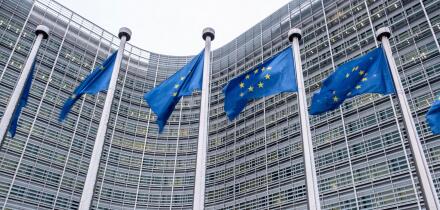by Professor Richard Roberts, Kings College London
On September 28, 1976 — 40 years ago this month — Denis Healey, Chancellor of the Exchequer, arrived at Heathrow on his way to the International Monetary Fund’s annual meeting. As he waited in the VIP lounge, gin and tonic in hand, he learned that the sterling crisis that had started in March had blown up again. Healey headed back to the Treasury and announced that Britain intended to apply to the IMF for a record $3.9bn loan.
The purpose of the borrowing from the IMF was to replenish Britain’s foreign currency reserves to boost confidence in the defence of the pound and therefore to stop the run.
It was by no means Britain’s first such borrowing. In June of that year, Britain had received a six-month $5.3bn credit facility from the central banks of the other G10 countries that had stabilised sterling over the summer. With $1bn drawn from that facility, the British government owed foreign creditors a total of $19bn. Most of this borrowing was not a pressing problem, being medium or long-term. But the central bank credit was due for repayment on December 9, at which point Britain’s foreign exchange reserves would be down to $2.5bn.
So what? Since June 1972 the pound had been floating, so, in theory, the currency was free to find its equilibrium level. But there was the thorny matter of the $5bn-equivalent of volatile ‘sterling balances’ held by foreign central banks — much more than Britain’s foreign exchange reserves.
If a run really got going sterling could go through the floor, destabilising the fragile post Opec-oil price shock international economy and triggering drastic British policy measures. The Wall Street Journal’s advice to investors to get out of sterling was headlined: ‘Goodbye Great Britain’.
Under the circumstances, private lenders were naturally reluctant to lend to the British government.
Since May there had been a ‘buyers strike’ in the Gilts market. This was a problem; the Labour administration was running a massive budget deficit to stimulate demand because of the recession, and this meant heavy public borrowing. But the Gilt buyers had no confidence in government economic policy and potential buyers were convinced that Britain’s interest rates would have to rise — meaning a capital loss.
Unsurprisingly, the international capital market was also firmly shut to British borrowings — the leading US international monetary official even fretted with colleagues about a British default.
The IMF was the only source of funds to replace the central bank credit upon repayment. But this meant IMF conditionality — which was exactly what the markets and even some members of the British Cabinet were hoping for.
A IMF mission arrived in London on November 1, checking in at Brown’s Hotel, Mayfair, under false names. The negotiations took six weeks, three times the customary period, and featured an unprecedented personal intervention by its, Johannes Witteveen.
At one point, the Labour Cabinet rejected the proposed conditions for the loan — significantly reduced public expenditure and borrowing — but reality took hold eventually.
The growing likelihood of a loan — with IMF fiscal and monetary discipline the price — plus a hike in Britain’s interest rate to a record and stratospheric 15%, led to a shift in outlook in the Gilts market. All of a sudden, buyers became keen to invest before the closure of the loan led to a rate cut and a leap in bond prices; the Gilts strike was over.
Britain’s loan application was filed on December 15, six days after the repayment of the central bank credit, in the meantime sterling was safeguarded by emergency swap arrangements.
The loan was approved by the IMF Executive Board on January 2, 1977.
Possessed of the IMF’s ‘Good Housekeeping Certificate’, Britain was able to return to the international capital market. On January 24, the Bank of England announced a $1.5bn seven-year Eurodollar loan from a syndicate of 13 British, American and German banks.
Every financial metric improved substantially in 1977, reflecting adjustments made both before and as a result of the IMF borrowing. In the event, less than half of the standby credit was drawn and repayment was made well ahead of schedule. By then sterling was well on its way to becoming a North Sea petrocurrency, posing a new problem — not devaluation, but overvaluation.
The British and Italian standbys of 1977 were the last of three decades of post-war IMF facilities for European countries. Henceforth, its client base was the developing world.
Until Greece, Ireland and Portugal from 2010, but that is another story.






